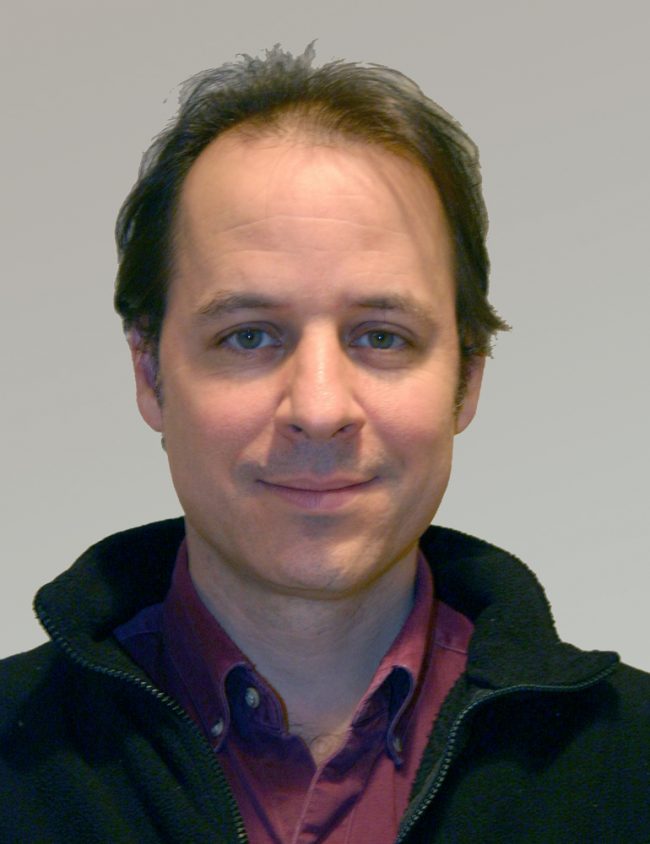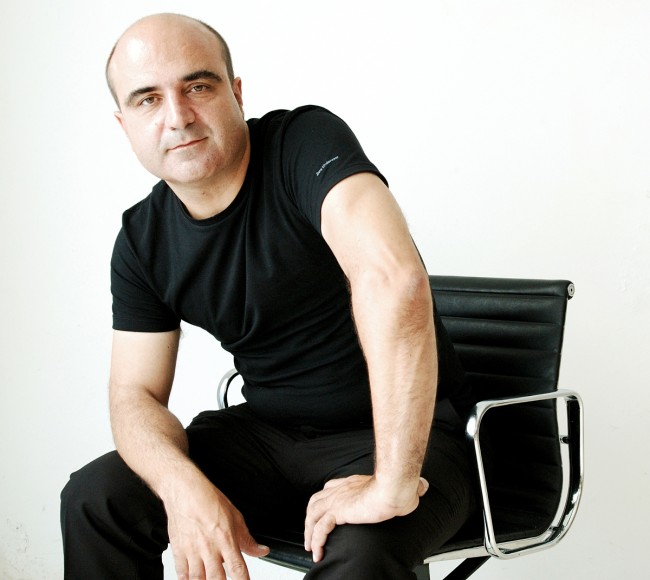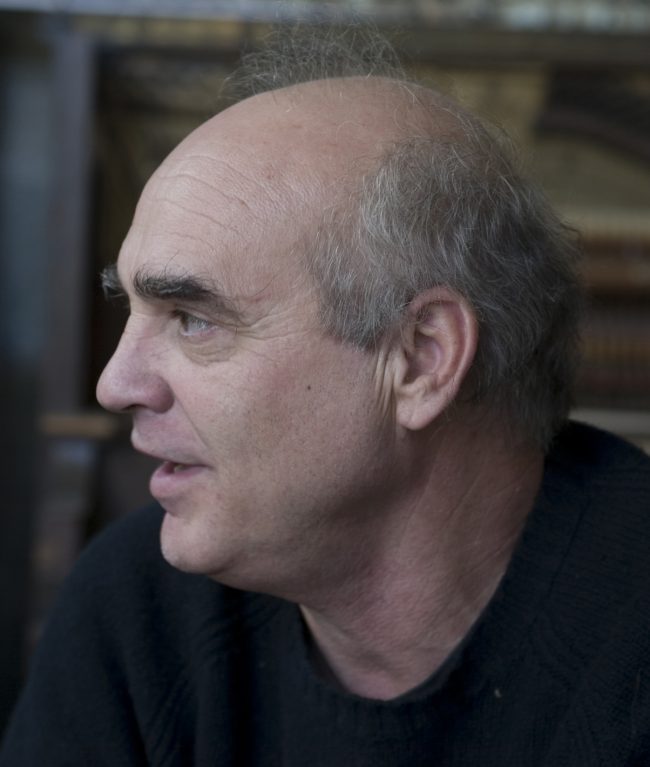
Celebrate ten years of Urban Omnibus and support ten more years of fresh, independent perspectives on citymaking with a donation today!
Celebrate ten years of Urban Omnibus and support ten more years of fresh, independent perspectives on citymaking with a donation today!
On Thursday, September 24th, 2009, housing experts from the worlds of design, development, law, policy and government gathered at the Japan Society for One Size Fits Some, an international symposium convened by the Citizens Housing and Planning Council (CHPC). The symposium is part of wider research project by CHPC that takes a fresh look at housing and space standards in New York City.
The program included presentations by six architects from Tokyo, Barcelona, San Diego, Montreal and Leipzig, each of whom shared their unique insights on designing and planning compact, shared, and flexible housing to meet the shifting needs of dynamic 21st century households. Their reflections were designed to begin a dialogue here in New York City intended to address the challenges of changing our existing regulatory framework.
Jerilyn Perine, Executive Director of CHPC, began the day’s proceedings by asking: why should we care about the issue in New York City? She framed the symposium in the historical, social, political and architectural context of New York City. Demographics, technologies (such as electrical light, heating and air conditioning), and the uses of the city’s building stock have changed dramatically since much of our current housing codes, laws and resolutions were developed. The Tenement House Act of 1901 and the Multiple Dwelling Law of 1929 set a standard for light, air, room size, health and safety that still largely influences our housing stock and the regulations codified and enforced by municipal, state and federal agencies today. Yet, fewer and fewer people can afford to live within this outdated housing standard, and more and more live outside of it. Perine issued a powerful call to action for policy-makers and designers to provide housing solutions that are more flexible and responsive to changes in population, livelihoods, family structure and costs. The challenge – for housing officials, designers and developers – is to “look at how people are really living.” If we fail to do this, and our population continues to grow, the mismatch between households and housing stock will become even deeper, causing incredible dysfunction in an already complicated market.
Watch Perine’s presentation on CHPCNY.org (coming soon) and then read the recap of the day’s events below. CHPC and Urban Omnibus want to hear from you, whether or not you attended the symposium. Please share opinions, reflections and precedents in the comments field below.
Rosanne Haggerty, chair of CHPC’s subcommittee on housing and space standards, and Abby Hamlin introduced the first two speakers, Azby Brown and Tomoyuki Utsumi, both of whom reported on household trends and housing design in Tokyo. In her introduction, Hamlin urged the audience to question existing terms of spatial quality. The vocabulary of regulation relies heavily on what is quantifiable, yet dimensions cannot exclusively determine spatial quality.
 Brown is a native of New Orleans who traveled to Japan 25 years ago to study temple carpentry and has made Tokyo his home ever since. His study of the techniques Japanese architects use to contend with incredible space constraints in urban Japan is informed by a spatial reading of the history of home design and urban form in Japan: 150 years ago the average size of a commoner’s house was 9.8 square meters while a low ranking samurai was likely to live in 426 square feet. But the spatial efficiencies associated with archetypal Japanese interior architecture (Shoin) – sliding screens, flexible and open plans, tatami mats, elaborate cabinetry – originated in the upper classes, where miniature design was high culture.
Brown is a native of New Orleans who traveled to Japan 25 years ago to study temple carpentry and has made Tokyo his home ever since. His study of the techniques Japanese architects use to contend with incredible space constraints in urban Japan is informed by a spatial reading of the history of home design and urban form in Japan: 150 years ago the average size of a commoner’s house was 9.8 square meters while a low ranking samurai was likely to live in 426 square feet. But the spatial efficiencies associated with archetypal Japanese interior architecture (Shoin) – sliding screens, flexible and open plans, tatami mats, elaborate cabinetry – originated in the upper classes, where miniature design was high culture.
“It’s not the size of the spaces, it’s how the space allows people to communicate, share, contact, with certain degree of separateness.”This tradition creates a legacy of small home design that many architects are adapting to current reality: in 2003, the average square footage a family-house in Japan was 1036 square feet for an average cost of $400,000. The corresponding figures for the US were double the size and half the price. Brown showed a number of beautiful examples of architectural solutions to build very small, single-family homes on footprints as small as 320 square feet. The design innovation apparent in these design projects relied on the sophisticated use of flexible materials, engineering (in Japan, engineering firms are willing to work on single-family homes), sightlines and light lines, and standard dimensions for such features as closets and kitchen appliances that enable the creation of customizable and mobile storage units and furniture.
Utsumi provided more examples of compact space in Tokyo, focusing on the work of Milligram Architectural Studio, which he founded in 1998. His presentation added the dimension of socio-economic and demographic change to the discussion of small home design in Japan. A house, he noted, is no longer exclusively a home: changes in the nature of work have created the need for houses to accommodate offices, while owner-occupiers of small-scale multi-family apartment buildings often have space requirements that change over time. Utsumi showed examples of the use of cloth to divide space, apartment buildings where a household can easily grow to absorb more units, and even a building where the entire interior structure was mobile.
In the symposium’s second session, Mark Ginsberg and Paul Goldberger welcomed Vicente Guallart and Ted Smith, from Barcelona and San Diego, respectively. Goldberger was quick to remind the audience that these cities are not especially known for their housing innovations: San Diego’s spatial extravagance epitomizes American suburban sprawl and Barcelona’s sophisticated urbanism is more often expressed through public space than through 21st century residential design.
 Guallart structured his presentation around three themes: his passionate commitment to social housing that is responsive to the natural environment, a deep understanding of both 20th century utopian architectural movements and contemporary cultural and demographic changes, and the significance of how such trends as social media and file sharing might have implications for how we design, live in and share space.
Guallart structured his presentation around three themes: his passionate commitment to social housing that is responsive to the natural environment, a deep understanding of both 20th century utopian architectural movements and contemporary cultural and demographic changes, and the significance of how such trends as social media and file sharing might have implications for how we design, live in and share space.
The Spanish demographic portrait he painted – with couples marrying later in life, numbers of individuals per housing unit decreasing, and numbers of people living alone increasing – set the context for an ambitious macro-project, currently in design outside Valencia, called Sociopolis. This project introduced an urban-scale set of strategies: a street system mapped as a circuit rather than a grid, open space planned to be agriculturally productive, multiple scales of resource sharing (dwelling, floor, building, neighborhood) and sensitive distinctions between different kinds of privacy. But the innovations he outlined also operate at the scale of individual housing unit, such as the digital fabrication of individually modified furniture.
According to Guallart, if the Bauhaus principle that form must follow function set the agenda for a 20th century philosophy of design, our current reality suggests that a corresponding maxim for the 21st century should be for form to follow energy, to pursue greater efficiencies.
 Smith picked up Guallart’s threads of shared resources and the pursuit of greater efficiencies and demonstrated their application to the distinctly American condition of San Diego. His presentation traced the arc of a career spent playing with codes and regulations to create alternative densities in a landscape of sprawl. In fact, the limited vocabulary of housing regulation in California – in which all regulatory process is based on the unit – provided the essential framework for Smith’s interventions. When the California courts, in 1982, threw out the definition of family as exclusively biologically related, they unwittingly “opened the floodgates for innovation” in providing opportunities to design and build more compact and efficient neighborhoods.
Smith picked up Guallart’s threads of shared resources and the pursuit of greater efficiencies and demonstrated their application to the distinctly American condition of San Diego. His presentation traced the arc of a career spent playing with codes and regulations to create alternative densities in a landscape of sprawl. In fact, the limited vocabulary of housing regulation in California – in which all regulatory process is based on the unit – provided the essential framework for Smith’s interventions. When the California courts, in 1982, threw out the definition of family as exclusively biologically related, they unwittingly “opened the floodgates for innovation” in providing opportunities to design and build more compact and efficient neighborhoods.
The primary premise of Smith’s rationale, based on loopholes in ordinances, is to build a residential building in which “every bit of the building is livable.” To that end, he showed suites with shared kitchens but individual staircases, offices in living rooms, funds spent on high-quality building materials rather than underground parking, homes with eight bedrooms and eight bathrooms, and “four-unit” apartment buildings with 12 units. He showed how siting these types of buildings at the interface of commercial and residential uses can create a “jetty against the sprawl,” based on informed manipulation of bulk standards and land use designations. And he showed how identifying micro-markets of home-buyers – in this case, the community of San Diego residents who desired unusual and affordable living spaces in a (relatively) dense urban environment – can inform the ways we think about housing on a large-scale, but cautioned that we shouldn’t expect reforming the code to provide all the solutions. Much like the dimensions of a housing unit, an unconventional family is, after all, difficult to define and difficult to regulate.
James Colgate, Assistant Commissioner for Technical Affairs and Code Development at the New York City Department of Buildings, and Mark Strauss, Senior Partner at FXFOWLE Architects, introduced the final pair of speakers, who moved the discussion beyond individual design and development projects to systemic approaches to housing innovation through scalable prototypes and long-term planning.
Friedman echoed the notion that demographic and socio-economic changes coupled with natural resource depletion constitute an urgent call to action. But he too found productive precedents for the future of affordable homes by looking to the past. His analysis of late 1940s home construction in North America led him to new ways of thinking about plywood, height versus width and interior flexibility. He pointed to the unrecognized wealth of DIY skills indicated by the popularity of such retailers as Home Depot. And he urged a conceptual shift away from selling houses and towards selling space.
The Grow Home prototype that Friedman designed is a 14-foot wide rowhouse, first built on the campus of McGill University, where Friedman is a professor of architecture. Space within the house can be left unpartitioned for the occupant to retrofit when means become available. Portions of space can also be sold – or more acquired – to allow for flexibility around affordability that is impossible with a static concept of a housing unit. He cited the multiplier effect of such cost-saving measures, rendered all the more powerful when he explained that tens of thousands of these homes have now been built, and 89% of the occupants are first-time homebuyers.
Reuther began her presentation by locating herself and her city, Leipzig, within the changing culture of work, family and mobility that characterize many of the social shifts referenced throughout the day. However, in addition, Leipzig has an extraordinary history through the 20th century. It was heavily damaged in the Second World War, became one of the major cities of the German Democratic Republic and now faces low demand problems as a shrinking city.
Despite this adversity, Reuther talked about the forward-thinking work that Leipzig has done, in taking this responsive process about demographics informing housing design, and allowing it to influence the wider planning process. Reuther herself has been a big part of this process there and she discussed how pivotal it is to fold all of these new conditions – changing demographics, work, media and technology – into a long-term planning process. She discussed different tools that can be used to do this, including Leipzig’s “Integrated Urban Development Concept,” an intensive planning document looking to 2020, the “Leipzig-Charta on Sustainable European Cities” and Germany’s International Building Exhibition.
Acclaimed New York City urban planner Alex Garvin and The New Yorker’s Paul Goldberger provided final thoughts, reconnecting the day’s presentations to the context of New York’s building code, and touching on such topics as financing, adaptive reuse, and change from below. Listen to their conversation by streaming or downloading it here.
And then, let us know what you think in the comments field below.
– C.S.
Azby Brown (Tokyo) is a Professor of Architectural Design at the Kanazawa Institute of Technology and founder and director of the Future Design Institute within the Institute. He writes extensively about compact housing including books such as ‘Small Spaces’, ‘The Very Small Home’ and ‘The Japanese Dream House’. His most recent book, ‘Just Enough: Lessons in Living Green from Traditional Japan’ will be available in early 2010.
Avi Friedman (Montreal) is a Professor at McGill School of Architecture and the founder and director of its Affordable Homes Program. He is known nationally and internationally for his housing innovation and in particular for the Grow Home, a rowhouse designed to allow the interior to be altered to fit the space needs and budget of the owner. He is the author of seven books on housing, a practicing architect and the recipient of numerous awards. In the year 2000 he was selected by Wallpaper magazine as 1 of 10 people from around the world “most likely to change the way we live.”
Vicente Guallart (Barcelona) is the director of the new Institute for Advanced Architecture of Catalonia. He has designed many housing projects that incorporate new technologies and are specifically designed as mixed-use, for a mixture of household types. His housing development ‘Sociopolis’ was featured in a MoMA exhibit in New York City in 2006 on Spanish architecture.
Iris Reuther (Leipzig) is the founder and principal of the Office for Urban Projects; one of the first woman-owned technical planning firms to emerge from the former GDR. Dr. Reuther’s work focuses on developing mixed-use environments in areas of low demand and economic adversity.
Ted Smith (San Diego) is an innovative architect who founded the firm Smith and Others. He also works as a developer-builder committed to producing alternative densities inclusive of diverse economies and types of dwelling. Ted Smith’s “Go-Homes,” developed in the 1980s-90s, were re-imagined versions of the one family house to accommodate multiple unrelated single persons.
Tomoyuki Utsumi (Tokyo) founded Milligram Architectural Studio in Tokyo in 1998. He is at the forefront of the movement to revolutionize the way that Tokyoites live, from developing compact homes for single person households to reworking apartments so that generations of a family can easily live together. Mr Utsumi is also a lecturer at Keio University.
All images provided courtesy of the related speakers.
The views expressed here are those of the authors only and do not reflect the position of The Architectural League of New York.
Comments